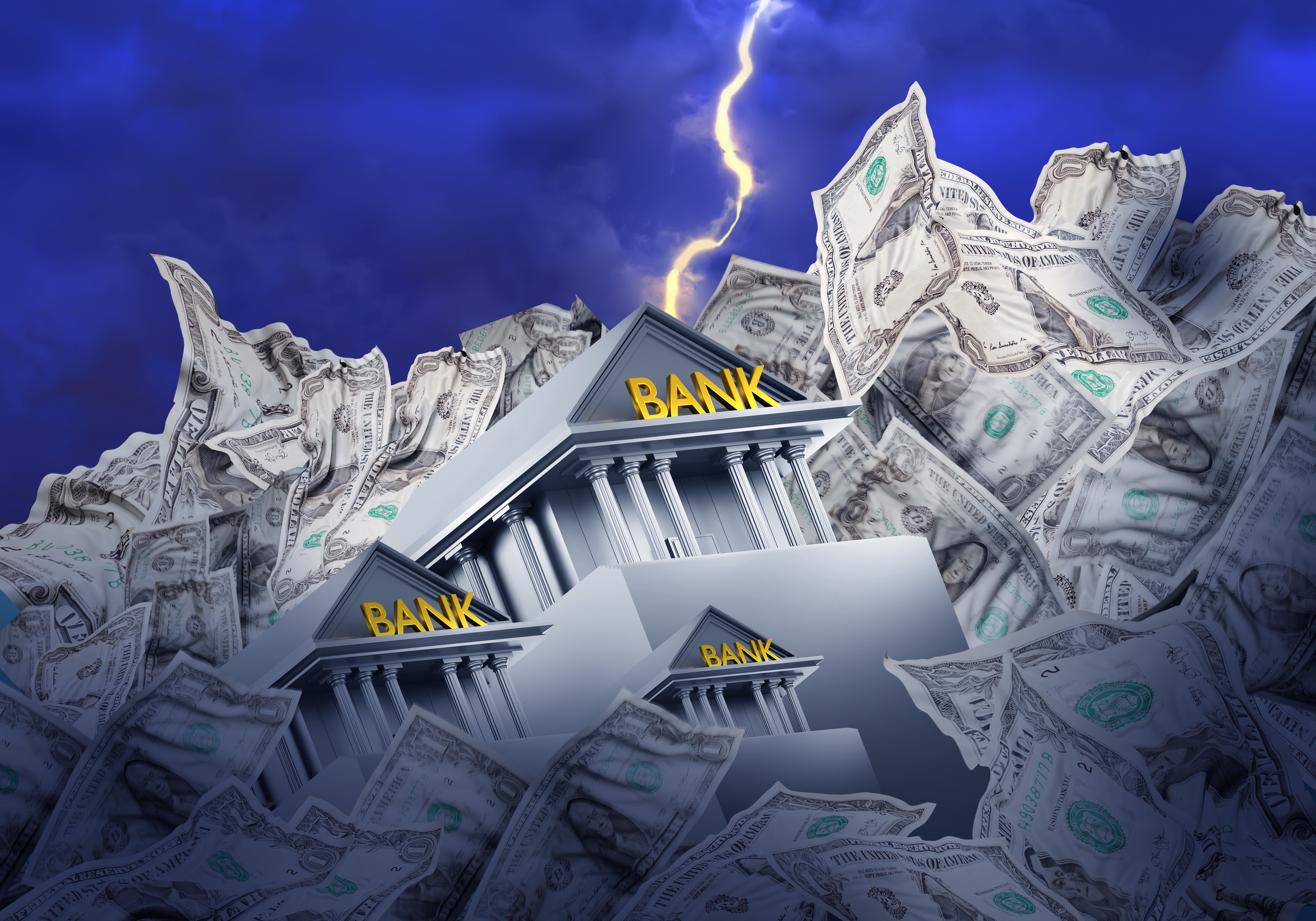
Posted March 22, 2023
By Jim Rickards
The Banking Crisis — and Biden Bucks
The biggest mistake any analyst or investor can make right now is to believe that the banking crisis is over.
Veterans of such crises (and I include myself in that category) know that once the dominoes start falling, they keep falling until some government intervention of a particularly draconian kind is imposed.
We’ve seen some significant regulatory actions from the Federal Reserve, the Federal Deposit Insurance Corporation (FDIC), the U.S. Treasury and the Swiss National Bank, but the fixes have been temporary and followed quickly by new failures.
This will continue.
In the past two weeks, we’ve seen the sequential failures of Silvergate Bank (a bridge from the crypto world), Silicon Valley Bank, Signature Bank (another crypto conduit to the regular banking world), First Republic Bank and the giant Credit Suisse.
Some of these were handled by regulatory intervention, others by private bailouts and still others by central bank bridge loans. But in all cases, the target bank had either failed outright or was on the brink of failure. What’s important to bear in mind is that crises of this type are not over in days or weeks.
This Could Last a Year or More?
A slow-motion rolling panic that takes a year or longer is more typical. The September 1998 financial crisis involving Long Term Capital Management actually began in Thailand with a currency devaluation in June 1997.
The September 2008 bankruptcy of Lehman Bros. was the culmination of a panic that started in the summer of 2007 with mortgage losses and a run on a French bank. That panic proceeded with the failure of Bear Stearns in March 2008 and the double failures of Fannie Mae and Freddie Mac in June 2008.
In other words, panics can run for a year or longer before they are finally squashed by massive regulatory intervention. Using that measure, the current crisis began in March 2023 with the Silvergate collapse and could run until early 2024 before matters are resolved.
Unrealized losses on securities held by FDIC-insured banks exceed $620 billion. That’s the amount of bank capital that would be wiped out if the banks were forced to sell those securities to meet demands from depositors who want their money back.
That would cause additional bank failures and continue the panic that began this month indefinitely.
What Does All This Have to Do With Biden Bucks?
I’ve written a lot lately about what I call Biden Bucks. That’s my term for the central bank digital currency (CBDC) the government is preparing as I write this article.
What does all this have to do with Biden Bucks? Well, plenty, as it turns out…
Whether an account is in CBDC or a regular checking account doesn't make that much difference. Bank runs today are no different than in the 1930s from a behavioral perspective.
It's all about lost confidence, fear, not wanting to be the last person out of a burning building, rumors, word of mouth and a host of psychological factors that are part of human nature.
That part hasn't changed since at least the 14th century with the failure of the Bardi and Peruzzi banks around 1345.
What has changed is technology. Marshall McLuhan said in the 1960s that in the global village, everyone knows everything at the same time. He was right. That means when a bank run begins, there's an immediate reaction.
The difference with the 1930s is that you don't line up around the corner and wait for the chance to demand cash from the teller. You take out your iPhone, make a few taps and, whether it's Venmo or a wire transfer, the money is on its way out the door.
Bank Runs in the Digital Age
I talked to a guy last week who was moving $8 billion from Signature Bank through the SigNET digital payment platform. He sent his wire two Thursdays ago, but everything was in limbo from Thursday night until Monday morning. No one knew if the wires cleared or not. By last Monday, they cleared.
The point is whether you're a retail depositor with $1,000 or a maven with $8 billion, everyone was online moving money all at once. In that sense, CBDCs don't matter much.
Whether it's CBDC, Venmo, wire transfer or cash from an ATM, everyone is cashing out at the same time via digital channels. The only exception to this are insiders who can see the meltdown before the public. They tend to get all their money out. (Hopefully, some of them will end up behind bars, but don’t hold your breath.)
But there is one huge impact of CBDCs that is entirely new and sets them apart from what's described above...
CBDCs are programmable and controlled by the government.
Trapped in Money Jail
This means when a run develops, the government can stop the run just by freezing CBDC account transfers. They can even claw back earlier transfers.
Since the government controls the CBDC ledger, they can see where the early withdrawals went and simply reinstate them on the account of the failing bank and debit them from the accounts of the transferees. The government can do this with a few keystrokes because they see everything.
This means that once Biden Bucks is implemented, you're locked into a system controlled by the government. You're in a money jail.
There's no point even starting a bank run because the government can track your movements and put the money back where it started. It's one of many ways that Biden Bucks give the government total control of your money and can monitor your thoughts and movements.
How You Can Fight Back
As described, we're already pretty much under surveillance. Biden Bucks is the last step in the total surveillance state and total control of your money.
The United States is moving closer and closer to a dictatorial-style government. I know that may sound like a big exaggeration, but I’m afraid it isn’t. It’s just an extrapolation from current trends. You don’t have to be a conspiracy theorist to recognize it.
And it’s being enhanced by central bank digital currencies.
I advise adopting a variety of alternative currencies including cash (while it lasts), gold coins, silver coins, cryptocurrencies and commodity barter. That's one reason the government is trying to eliminate cash and kill crypto. It may come down to gold and silver. Get yours while you still can.
I recommend that you allocate up to 10% of investable assets to physical gold or silver as a hedge and as protection against a banking sector collapse.
In the meantime, investors should reduce exposure to stocks. The time will come to return to the stock market. That time is not yet.

How Others’ Incompetence Costs You Big-Time
Posted January 17, 2024
By Byron King

Turning Empty Cubicles Into Houses
Posted January 15, 2024
By Zach Scheidt

"Boring AI": Overlooked Opportunity From CES 2024
Posted January 12, 2024
By Zach Scheidt

5 Must-See Predictions
Posted January 10, 2024
By James Altucher

Welcome to Earth, the Mining Planet
Posted January 08, 2024
By Byron King
